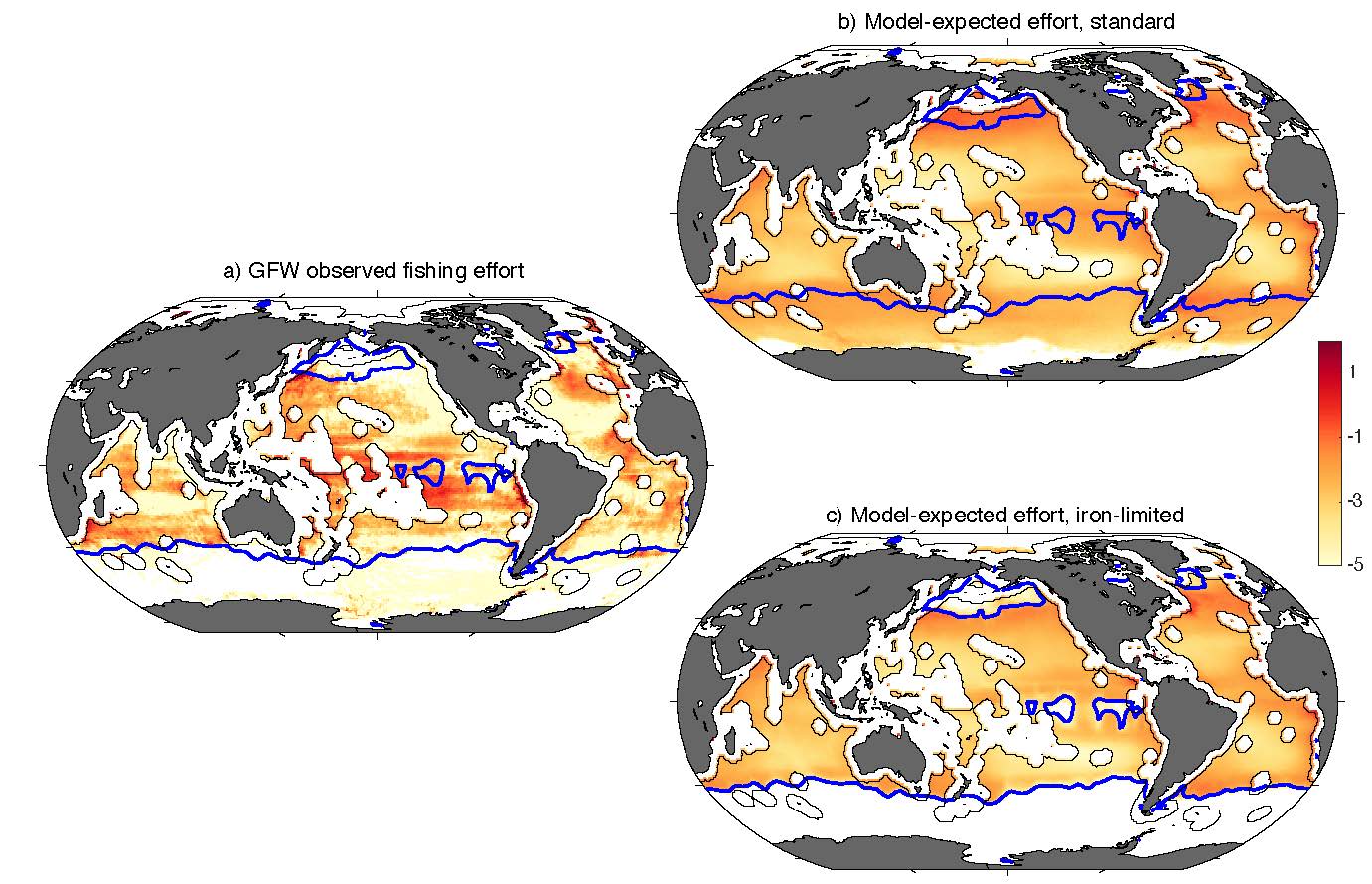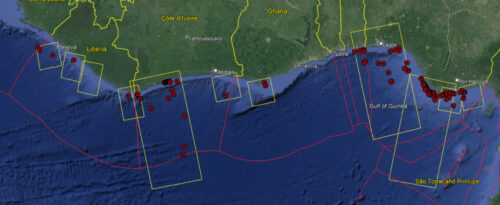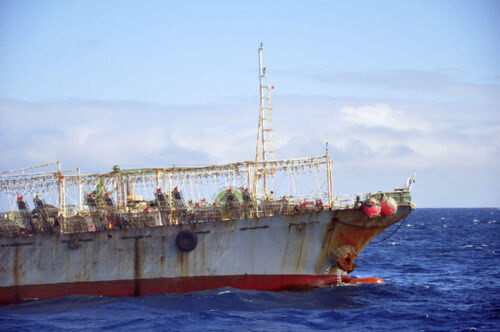 Eric D Galbraith, professor at McGill University and associate faculty at the Autonomous University of Barcelona, shares his journey to a new paper, Growth Limitation of Marine Fish by Low Iron Availability in the Open Ocean, that harnesses Global Fishing Watch data with a healthy dose of collaboration and curiosity.
Eric D Galbraith, professor at McGill University and associate faculty at the Autonomous University of Barcelona, shares his journey to a new paper, Growth Limitation of Marine Fish by Low Iron Availability in the Open Ocean, that harnesses Global Fishing Watch data with a healthy dose of collaboration and curiosity.
The story of this paper started with an attempt to predict where fishing activity should occur throughout the global ocean, based on simple principles. For a few years, colleagues and I had been working on a computer model that uses satellite images of the ocean surface to estimate phytoplankton growth rates, and then – using a series of equations based on ecological theory – predicts the growth of all fish at every point in the ocean. A simple economic model then simulates the evolution of fishing effort over time, harvesting the modeled fish populations, which then changes the fish abundance. So when the detailed global coverage of fishing activity provided by Global Fishing Watch (GFW) became available, I was really excited to compare it with the global model prediction to see how well we were doing.
A key model error
When I looked at the first plots comparing the model and the GFW data, I was pretty pleased. The model reproduced the high intensity of fishing activity along coastlines, compared with much lower activity in the open ocean. I showed it to David Kroodsma, the GFW research director, sure that he would be impressed with the model skill.
“Wow, your model has problems,” he said. “Why has it got all this fishing activity in these huge areas it obviously isn’t happening?” David pointed to the Southern Ocean, the North Pacific, and the eastern equatorial Pacific.
It was true. The model predicted lots of fishing activity in these three regions, and GFW showed very little fishing actually happening within them. But the association of those three regions instantly switched a lightbulb on in my head – from years of studying marine biogeochemistry, I knew very well that those three regions are the world’s most intensely iron-limited regions.
Our iron-poor ocean
Iron is abundant on land, but very scarce in seawater, and in those three regions it is found in such low concentrations that it couldn’t even be measured accurately until the 1980s.
For decades, oceanographers and biogeochemists have been studying the impacts of the low iron concentrations on phytoplankton growth. But I had never heard of iron being important for the nutrition of wild fish – could it be possible that this was the explanation for the model error?
My colleague Priscilla LeMezo dived into the literature to see if there was any work on the iron requirements for fish. She quickly found that aquaculturalists have long been concerned with the iron content of fish feed, since insufficient iron contents can lead to anaemia and slow growth. In fact, she found that the recommended aquaculture feed iron contents were an order of magnitude higher than the iron contents of iron-limited plankton!
Further research turned up more supporting evidence: like most animals, fish have a hard time assimilating iron from their food, explaining their need for a relatively iron-rich food supply. Then, she learned about the Antarctic ice fish. It is the only vertebrate that has ever evolved to live without iron-requiring hemoglobin, and is only found in the iron-poor Southern Ocean.
There seemed no way this could be coincidence: iron nutrition must be a consideration for fish, not just plankton.
When undergraduate research student Gerard Solanes Hernandes added a simple representation of iron limitation to our computer model, the comparison of fishing activity with GFW dramatically improved. Though this isn’t proof, it raises the possibility that there is less fishing in iron-poor regions because fish have a tough time surviving out there.
Less fishing in iron-poor regions
Our results open up all kinds of additional questions about what this could mean for marine ecosystems. For example, are marine mammals, birds and cephalopods better than fish at surviving on iron-poor food? Could the fact that rivers and streams tend to be iron-rich be a reason that salmon spawn in freshwaters? We had no idea, when we started to look at fishing effort in the GFW data, that it might tell us something about the dietary requirements of fish on the high seas. For me, it was a great example of scientific teamwork, and the power of combining model predictions with careful observations to come up with new ideas for how the world works.



